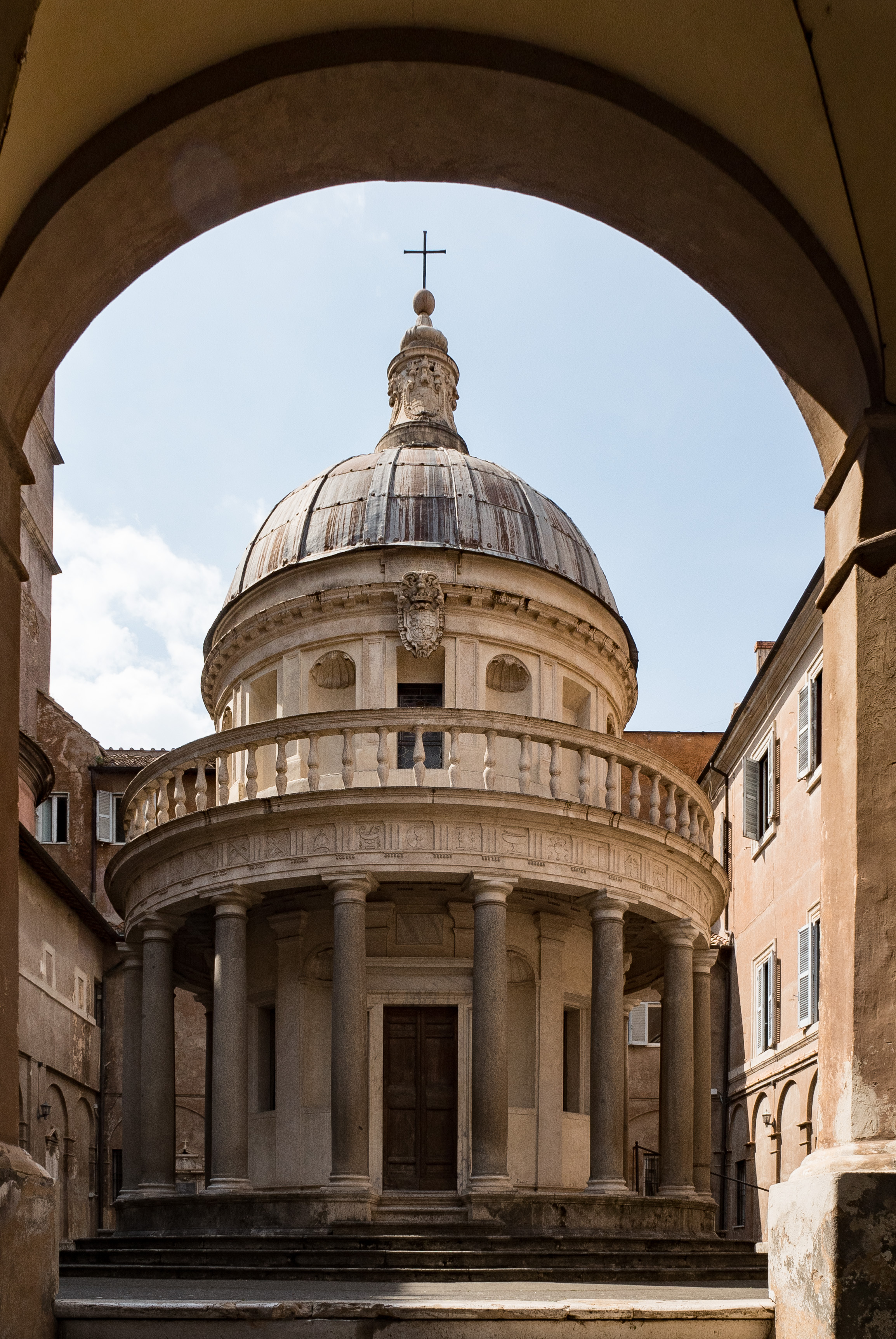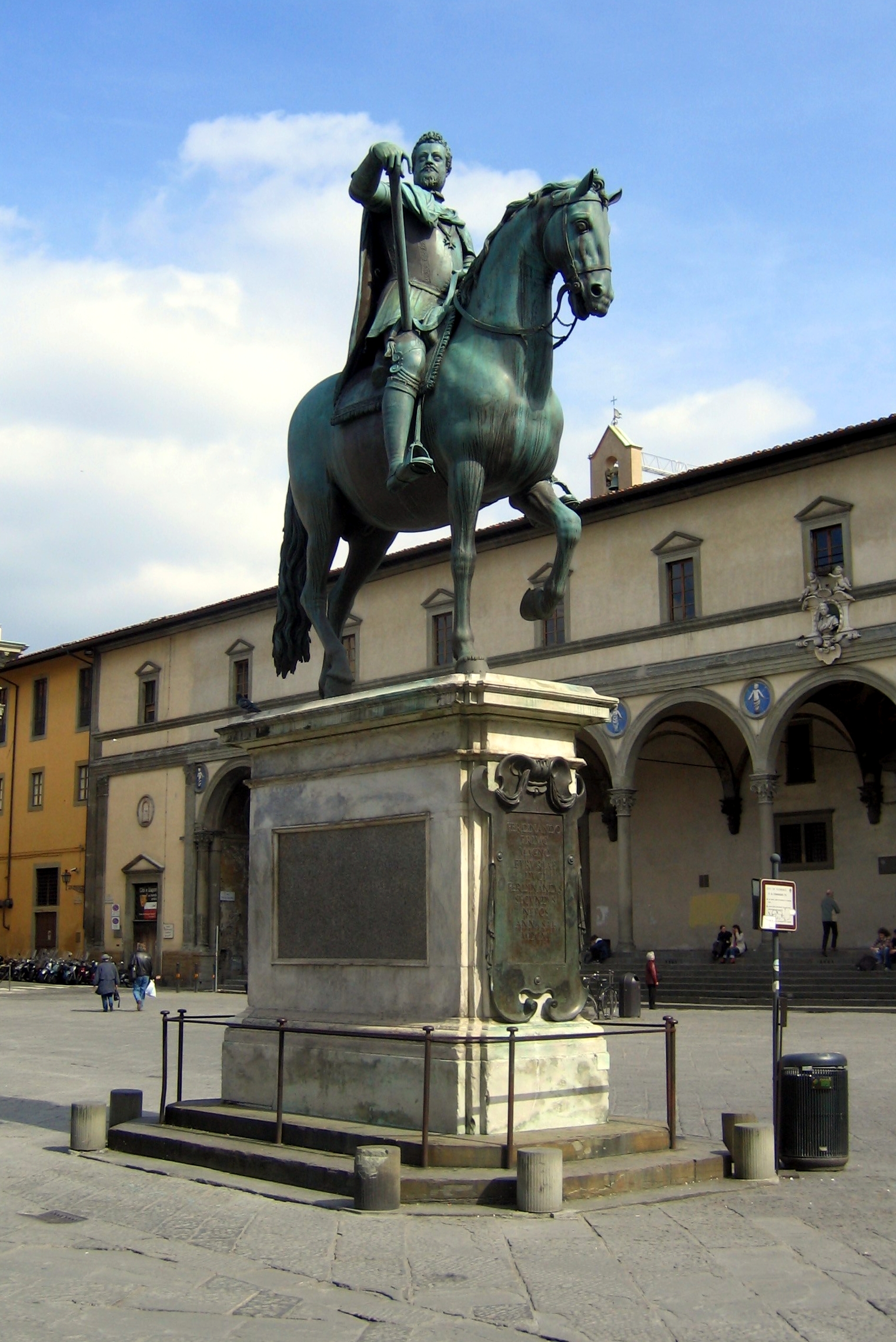|
San Vigilio, Siena
San Vigilio is a Renaissance and Baroque style, Roman Catholic church located on Via San Vigilio, Siena, region of Tuscany, Italy. The exterior has a sober classical facade, while the interior has rich Baroque decorations. The church is dedicated to the Bishop and martyr St Vigilius; it now serves as the chapel for the University of Siena. It stands across the street from the Castellare Ugurgieri, and down the street from the Palazzo Bandini Piccolomini found on the junction with Via Sallustio Bandini. History The building was initially a parish church built by the Ugurgieri family. The structure was occupied by the 11th century with monks of the Camaldolese order, who had a convent adjacent to the church. That building burned in a fire in 1153, and was reconstructed by 1231. In 1420, the monks were expelled. In 1556, the church was ceded to the Jesuit order. They rebuilt the church in 1561, which they continued to refurbish until 1775. When the Jesuits were suppressed in 1759, ... [...More Info...] [...Related Items...] OR: [Wikipedia] [Google] [Baidu] |
Renaissance Architecture
Renaissance architecture is the European architecture of the period between the early 15th and early 16th centuries in different regions, demonstrating a conscious revival and development of certain elements of ancient Greek and Roman thought and material culture. Stylistically, Renaissance architecture followed Gothic architecture and was succeeded by Baroque architecture. Developed first in Florence, with Filippo Brunelleschi as one of its innovators, the Renaissance style quickly spread to other Italian cities. The style was carried to Spain, France, Germany, England, Russia and other parts of Europe at different dates and with varying degrees of impact. Renaissance style places emphasis on symmetry, proportion, geometry and the regularity of parts, as demonstrated in the architecture of classical antiquity and in particular ancient Roman architecture, of which many examples remained. Orderly arrangements of columns, pilasters and lintels, as well as the use of semici ... [...More Info...] [...Related Items...] OR: [Wikipedia] [Google] [Baidu] |
Pietro Tacca
Pietro Tacca (16 September 1577 – 26 October 1640) was an Italian sculptor, who was the chief pupil and follower of Giambologna. Tacca began in a Mannerist style and worked in the Baroque style during his maturity. Biography Born in Carrara, Tuscany, he joined Giambologna's atelier in 1592. Tacca took over the workshop of his master on the elder sculptor's death in 1608, finishing a number of Giambologna's incomplete projects, and succeeding him almost immediately as court sculptor to the Medici Grand Dukes of Tuscany. Like his master he took full advantage of the fashion among connoisseurs for table-top reductions of fine bronze sculptures. Louis XIV possessed Giambolognesque bronzes of ''Heracles and the Erymanthian Boar''and ''Heracles and the Cerynian Stag'(now Louvre Museum) that are now attributed to Tacca, and dated to the 1620s Tacca began by finishing Giambologna's equestrian bronze of Ferdinand de' Medici for the Basilica della Santissima Annunziata di Fire ... [...More Info...] [...Related Items...] OR: [Wikipedia] [Google] [Baidu] |
Renaissance Architecture In Siena
The Renaissance ( , ) , from , with the same meanings. is a period in European history marking the transition from the Middle Ages to modernity and covering the 15th and 16th centuries, characterized by an effort to revive and surpass ideas and achievements of classical antiquity. It occurred after the Crisis of the Late Middle Ages and was associated with great social change. In addition to the standard periodization, proponents of a "long Renaissance" may put its beginning in the 14th century and its end in the 17th century. The traditional view focuses more on the early modern aspects of the Renaissance and argues that it was a break from the past, but many historians today focus more on its medieval aspects and argue that it was an extension of the Middle Ages. However, the beginnings of the period – the early Renaissance of the 15th century and the Italian Proto-Renaissance from around 1250 or 1300 – overlap considerably with the Late Middle Ages, conventionally dat ... [...More Info...] [...Related Items...] OR: [Wikipedia] [Google] [Baidu] |
Roman Catholic Churches In Siena
Roman or Romans most often refers to: *Rome, the capital city of Italy *Ancient Rome, Roman civilization from 8th century BC to 5th century AD *Roman people, the people of ancient Rome *''Epistle to the Romans'', shortened to ''Romans'', a letter in the New Testament of the Christian Bible Roman or Romans may also refer to: Arts and entertainment Music *Romans (band) was a short-lived female Japanese pop unit formed in 2003, consisting of five singers also active in other pop bands from Hello! Project. The group only released one single, "Sexy Night: Wasurerarenai Kare", on August 20, 2003, ranking N°10 on O ..., a Japanese pop group *Roman (album), ''Roman'' (album), by Sound Horizon, 2006 *Roman (EP), ''Roman'' (EP), by Teen Top, 2011 *"Roman (My Dear Boy)", a 2004 single by Morning Musume Film and television *Film Roman, an American animation studio *Roman (film), ''Roman'' (film), a 2006 American suspense-horror film *Romans (2013 film), ''Romans'' (2013 film), an India ... [...More Info...] [...Related Items...] OR: [Wikipedia] [Google] [Baidu] |
15th-century Roman Catholic Church Buildings In Italy
The 15th century was the century which spans the Julian dates from 1 January 1401 ( MCDI) to 31 December 1500 ( MD). In Europe, the 15th century includes parts of the Late Middle Ages, the Early Renaissance, and the early modern period. Many technological, social and cultural developments of the 15th century can in retrospect be seen as heralding the " European miracle" of the following centuries. The architectural perspective, and the modern fields which are known today as banking and accounting were founded in Italy. The Hundred Years' War ended with a decisive French victory over the English in the Battle of Castillon. Financial troubles in England following the conflict resulted in the Wars of the Roses, a series of dynastic wars for the throne of England. The conflicts ended with the defeat of Richard III by Henry VII at the Battle of Bosworth Field, establishing the Tudor dynasty in the later part of the century. Constantinople, known as the capital of the ... [...More Info...] [...Related Items...] OR: [Wikipedia] [Google] [Baidu] |
Bartolomeo Mazzuoli
Bartolomeo or Bartolommeo is a masculine Italian given name, the Italian equivalent of Bartholomew. Its diminutive form is Baccio. Notable people with the name include: * Abramo Bartolommeo Massalongo (1824–1860), Italian paleobotanist and lichenologist * Bartolomeo Aimo (1889–1970), Italian professional bicycle road racer * Bartolomeo Altomonte, a.k.a. Bartholomäus Hohenberg (1694–1783), Austrian baroque painter * Bartolomeo Amico a.k.a. Bartholomeus Amicus (1562–1649), Jesuit priest, teacher and writer who spent his adult life in Naples * Bartolomeo Ammanati (1511–1592), Florentine architect and sculptor * Bartolomeo Avanzini (1608–1658), Italian architect of the Baroque period * Bartolomeo Bacilieri (1842–1923), Italian cardinal, Bishop of Verona 1900–1923 * Bartolommeo Bandinelli (1488–1560), Italian sculptor * Bartolomeo Barbarino (c. 1568–c. 1617 or later), Italian composer and singer of the early Baroque era * Bartolomeo Bassi (early 1600s-1640s), Genoese ... [...More Info...] [...Related Items...] OR: [Wikipedia] [Google] [Baidu] |
Mattia Preti
Mattia Preti (24 February 1613 – 3 January 1699) was an Italian Baroque artist who worked in Italy and Malta. He was appointed a Member of the Order of Saint John. Life Born in the small town of Taverna in Calabria, Preti was called ''Il Cavalier Calabrese'' (the Calabrian Knight) after appointment as a Knight of the Order of St. John (Knights of Malta) in 1660. His early apprenticeship is said to have been with the " Caravaggist" Giovanni Battista Caracciolo, which may account for his lifelong interest in the style of Caravaggio. Probably before 1630, Preti joined his brother Gregorio (also a painter), in Rome, where he became familiar with the techniques of Caravaggio and his school as well as with the work of Guercino, Rubens, Guido Reni, and Giovanni Lanfranco. In Rome, he painted fresco cycles in the churches of Sant'Andrea della Valle and San Carlo ai Catinari. Between 1644 and 1646, he may have spent time in Venice, but remained based in Rome until 1653, returning ... [...More Info...] [...Related Items...] OR: [Wikipedia] [Google] [Baidu] |
Baldassare Franceschini
Baldassare Franceschini, called Il Volterrano after his birth place Volterra and, to distinguish him from Ricciarelli, Il Volterrano Giuniore (16116 January 1689) was an Italian late Baroque painter and draughtsman active principally around Florence and Volterra.Baldassare Franceschini, il Volterrano at the British Museum He was mainly known for his frescoes, altarpieces and easel paintings for churches and palaces in Florence, Volterra and Rome. His subject matter was diverse and included portraits, biblical and mythological scenes, history paintings and allegorical compositions. [...More Info...] [...Related Items...] OR: [Wikipedia] [Google] [Baidu] |
Francesco Vanni
Francesco Vanni (1563 – 26 October 1610) was an Italian painter, draughtsman, printmaker, publisher and printer active in Rome and his native city of Siena.Francesco Vanni at the British Museum Biography Vanni was part of a family of painters, including his half-brother Ventura Salimbeni and stepfather Arcangelo Salimbeni, the latter of whom died when Francesco was young. As a 16-year-old, Vanni went first to , then to Rome. He apprenticed with |
Flaminio Taja , a 1735 comic opera by Giovanni Battista Pergolesi
{{disambig, geodis ...
Flaminio may refer to: Geography * Flaminio (Rome), a quartiere * Flaminio – Piazza del Popolo (Rome Metro), an underground station * Rignano Flaminio, a comune in the Metropolitan City of Rome * Stadio Flaminio, a stadium in Rome Other * Il Flaminio ''Il Flaminio'' is a 1735 opera buffa by Giovanni Battista Pergolesi to a Neapolitan libretto by Gennaro Antonio Federico, first performed at the Teatro Nuovo, Naples. Untypically in Pergolesi's difficult and short career the opera was an immedi ... [...More Info...] [...Related Items...] OR: [Wikipedia] [Google] [Baidu] |
Gianlorenzo Bernini
Gian Lorenzo (or Gianlorenzo) Bernini (, , ; Italian Giovanni Lorenzo; 7 December 159828 November 1680) was an Italian sculptor and architect. While a major figure in the world of architecture, he was more prominently the leading sculptor of his age, credited with creating the Baroque style of sculpture. As one scholar has commented, "What Shakespeare is to drama, Bernini may be to sculpture: the first pan-European sculptor whose name is instantaneously identifiable with a particular manner and vision, and whose influence was inordinately powerful ..." In addition, he was a painter (mostly small canvases in oil) and a man of the theater: he wrote, directed and acted in plays (mostly Carnival satires), for which he designed stage sets and theatrical machinery. He produced designs as well for a wide variety of decorative art objects including lamps, tables, mirrors, and even coaches. As an architect and city planner, he designed secular buildings, churches, chapels, and publi ... [...More Info...] [...Related Items...] OR: [Wikipedia] [Google] [Baidu] |
Dionisio Montorselli
Dionisio Montorselli (1653 - circa 1712) was an Italian painter of the late-Baroque period. Biography He was born in L'Aquila, but mainly active in Siena painting for churches. In 1685, he traveled to Rome where he became a follower of Pietro da Cortona and Guido Reni Guido Reni (; 4 November 1575 – 18 August 1642) was an Italian painter of the Baroque period, although his works showed a classical manner, similar to Simon Vouet, Nicolas Poussin, and Philippe de Champaigne. He painted primarily religious .... he painted works in the Oratory of San Chiodi (adjacent to the church of San Michele in Poggio); San Vigilio;Guida di Siena, page 103. and Santa Maria in Provenzano. References 1653 births 1712 deaths 17th-century Italian painters Italian male painters 18th-century Italian painters Painters from Siena Italian Baroque painters 18th-century Italian male artists {{Italy-painter-17thC-stub ... [...More Info...] [...Related Items...] OR: [Wikipedia] [Google] [Baidu] |





